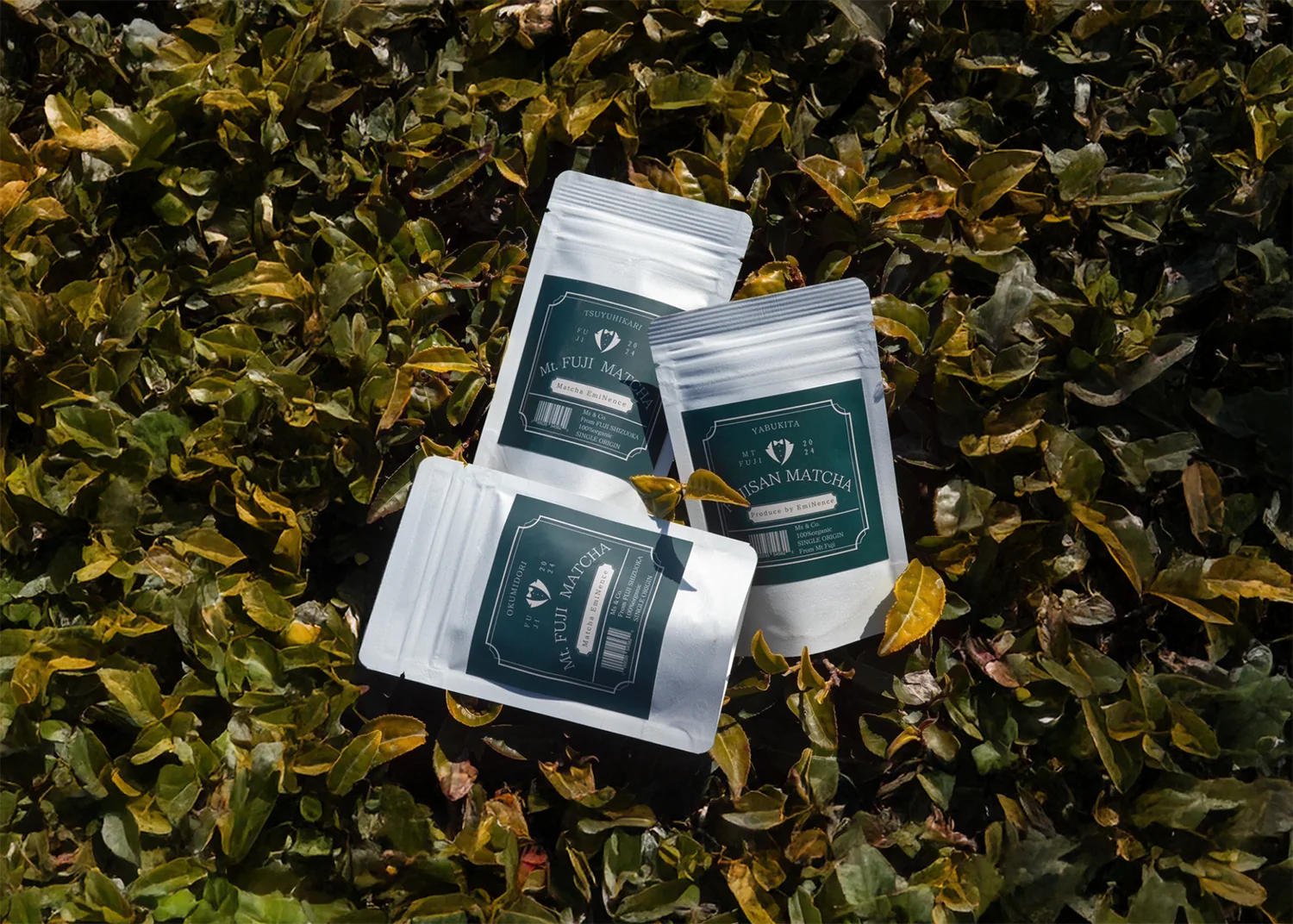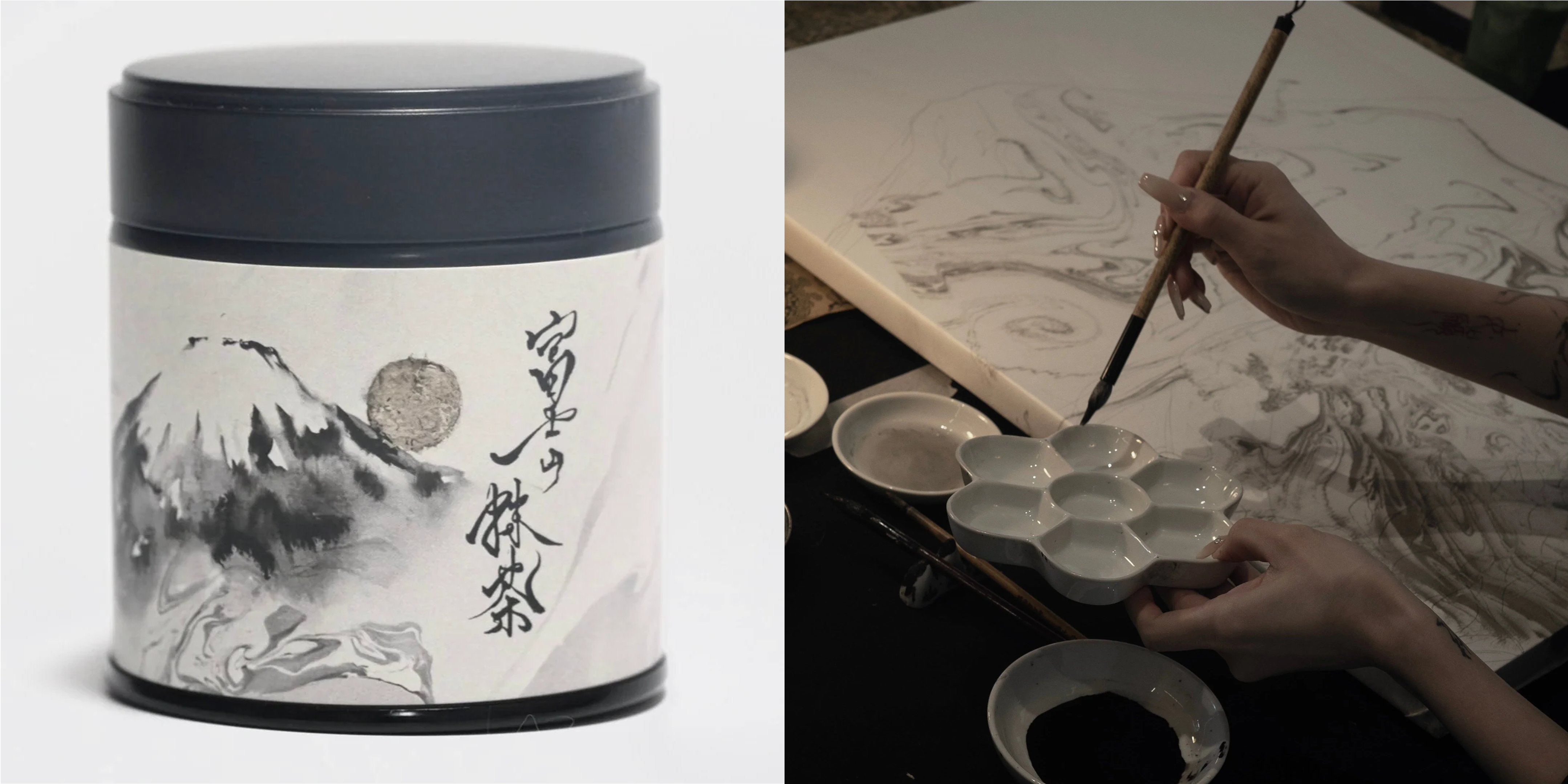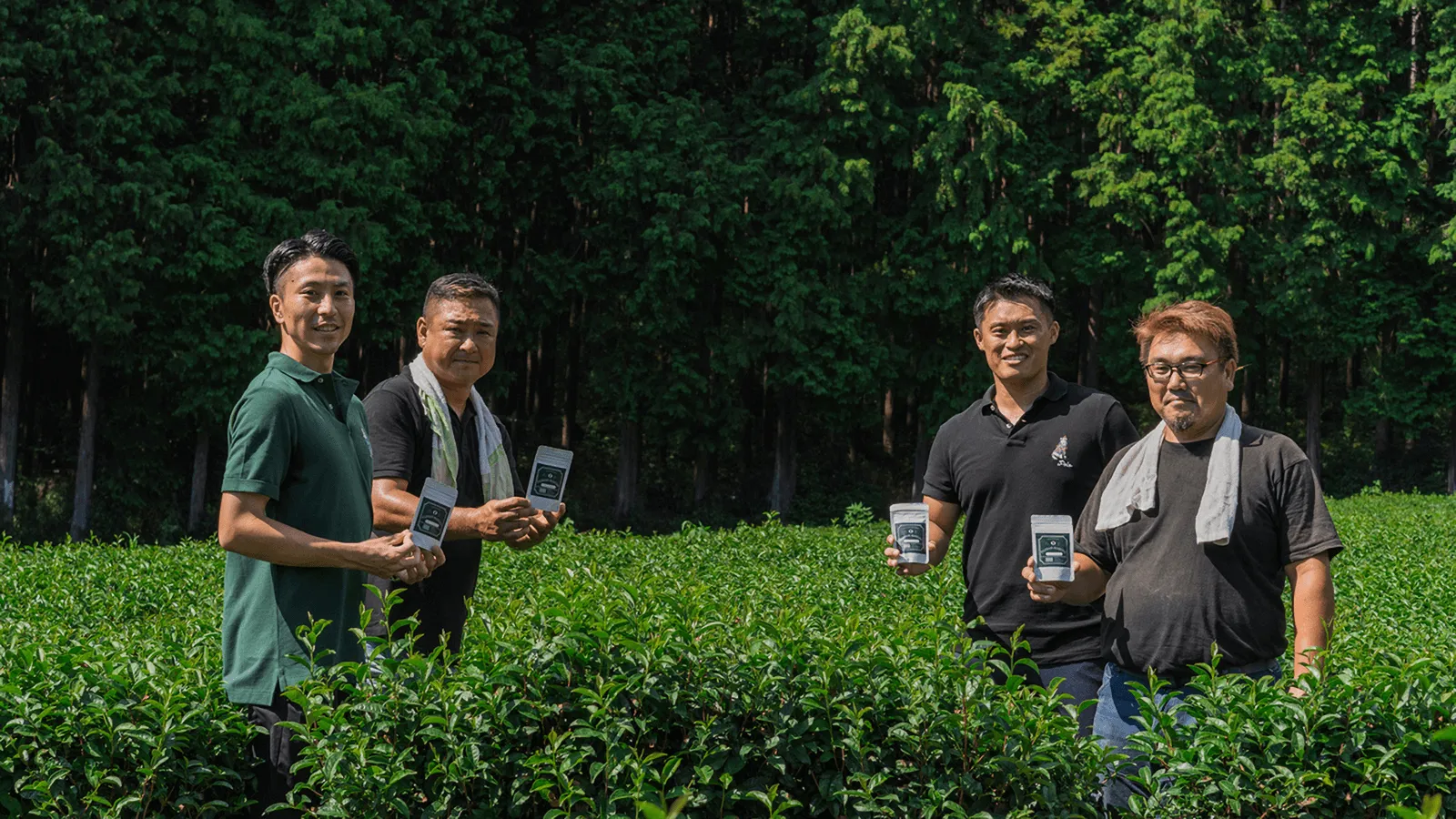New Possibilities for Matcha Cultivated by Mt. Fuji: A Challenge for Value Creation and Regional Contribution through Single Origin Dedication
A new way to enjoy matcha, "like wine." The story of a virtuous cycle of taste, art, and experience that started at the foot of Mt. Fuji.
Urelio Editorial Team

Special Matcha Grown at the Foot of Mt. Fuji
Tea fields spread against the backdrop of Mt. Fuji. Matcha grown here has unique characteristics not found in other regions. The natural environment of Mt. Fuji—its underground water, well-drained volcanic ash soil, temperature differences between day and night, and moderate humidity—offers ideal conditions for tea cultivation. While Mt. Fuji is strongly associated with tourism, it is also incredibly rich as an agricultural resource.
From this environment comes "Mt. FUJI MATCHA," crafted by EN. Corporation and Ms Company, focusing on single origin and single variety matcha. They offer matcha from different varieties like Tsuyuhikari and Okumidori, each with its unique character.
From the foot of the World Heritage Site, Mt. Fuji, new possibilities for matcha are beginning to unfold.
Varieties Tell the Terroir of Mt. Fuji
Each variety offered by Mt. FUJI MATCHA expresses the uniqueness of the Mt. Fuji region from different perspectives. Just as wine speaks of terroir, Mt. FUJI MATCHA matcha represents the land of Mt. Fuji, conveying its richness from various angles based on each variety.
One notable variety is "Tsuyuhikari," a breed born by crossing rich-flavored "Asatsuyu," a natural gyokuro, with "Shizu 7132," known for its cherry leaf-like scent. This relatively new tea leaf was designated as Shizuoka Prefecture's recommended variety in 2001. Its standout feature is overturning the common belief in the matcha world that "tea leaves with a strong aroma are also bitter." Tsuyuhikari offers a floral cherry leaf-like aroma and a deep sweetness and umami simultaneously.
Cultivated using the "covered" method, it is rich in amino acids like theanine. Shielding the leaves from strong sunlight increases umami components and creates the distinct "covered aroma" of matcha. The brewed color is also beautiful. Its bright green color is vivid to the eyes, offering visual enjoyment as well.
Another variety, "Okumidori," is characterized by a deep richness, abundant aroma, and smooth texture. It offers a mellow and thick umami with an elegant sweetness and minimal bitterness, leaving a refreshing aftertaste.
Each variety differs in taste and aroma, but what they all share is the specialness brought by the environment at the base of Mt. Fuji. The underground water, blessings of volcanic ash soil, and the climate created by the mountain's temperature differences. All these highlight each variety's individuality. Experiencing such uniqueness is a hallmark of single origin, although being single origin is uncommon in the matcha world. This deeply relates to Mt. FUJI MATCHA's philosophy.

The Choice of Single Origin
In the traditional matcha world, blending techniques have been highly valued. By skillfully combining tea leaves from multiple regions and varieties, a consistent taste can be achieved regardless of the quality of individual leaves. This is a crucial skill that has supported Japanese matcha culture, honed over many years.
Meanwhile, there are structural challenges in Japan's tea industry, as the quality of tea leaves is often not reflected in the price, making it difficult for producers to receive fair evaluations. Additionally, the lack of successors—a serious issue across Japanese agriculture—and the decline of the industry due to decreased demand.
Mt. FUJI MATCHA chose the path of single origin, focusing on tea from single regions and exploring new value different from traditional matcha. This is an endeavor to clearly evaluate quality and create a system that easily returns rewards to the creators. Being single origin provides transparency to the face of the growers, clearly communicating the individuality, or terroir, of the Fuji area. Most importantly, evaluations of quality are directly returned to the producers.
In the world of wine and coffee, indicating the origin and producers is normal, offering consumers transparency while enabling producers to take pride in their work. Mt. FUJI MATCHA introduced this concept into the matcha world, exploring a different value axis from tradition to expand matcha's possibilities. Choosing single origin is one such answer.
Taking Authentic Matcha to the World
With the global matcha boom, a problem has arisen. Powdered tea is being sold as matcha.
Matcha is made by grinding special tea leaves called "tencha" with stone mills. These are cultivated under shade, steamed, and dried without rolling before being carefully powdered. Powdered tea, by contrast, is a byproduct of the green tea production process and differs completely in method and quality. Mt. FUJI MATCHA is committed to spreading authentic matcha worldwide. Through single origin's high transparency method, it disseminates correct knowledge and value.
They plan to export to about 10 countries, including the United States, France, and Sweden. Leveraging the global recognition of the icon of Mt. Fuji, they aim to accurately convey Japanese matcha culture. Feedback from overseas buyers is also positive, and matcha cultivated at the foot of Mt. Fuji is steadily spreading worldwide.
Creating New Experiences Starting from Matcha and Mt. Fuji
Mt. FUJI MATCHA doesn't stop at taste. Starting with matcha, it creates multilayered experience value.
The event held on "Mt. Fuji Day," February 23, 2025, was symbolic. Inspired by Hokusai Katsushika's ukiyo-e "Black Fuji," long-established Japanese confectionery "Tago no Tsuki" developed a new product, and contemporary artist NAGON performed live. This was a moment where traditional Japanese motifs and modern art fused, creating new expressions woven by Mt. Fuji and matcha. NAGON's art displayed at this event later became the design for Fuji Matcha cans, receiving significant response both domestically and internationally.
More than tasting, it's about seeing and feeling. Matcha becomes an art experience. On September 15, 2025, the Mt. Fuji Matcha Cafe "Matcha EmiNence" opened. The location is Tago no Tsuki's Takaoka store, the origin of the project.
This cafe is not just an eatery. It's a place to experience Mt. Fuji matcha firsthand and an entrance connecting with the nature, people, and culture of Fuji City. People who get to know Mt. FUJI MATCHA worldwide or in urban areas will want to visit Fuji. From the place of production to the place of experience, it sends out value beyond the product of matcha from this area.

Creating a New Future for Fuji City's Tea Industry
Behind this project lies a sentiment for one's hometown.
One of the founders of EN. Corporation, Mr. Osaka, hails from Fuji City. While exploring ways to promote their hometown with co-founder Mr. Inao, they faced the tea industry's challenges: cheap tea leaf buying, a lack of successors, and declining demand. These structural issues of Japan's tea industry also existed in Fuji City, which is where they met a tea farmer from Ms Company who was striving to deliver matcha cultivated in Fuji City to the world. This encounter sparked the Mt. Fuji Matcha project.
Shizuoka Prefecture is known as Japan's top tea-producing region. However, the main production has been green tea. In the region around Mt. Fuji, tencha, the raw material for matcha, has scarcely been produced. Since 2017, tencha production began in the Fuji area, and a new industry is budding. In this flow, Mt. FUJI MATCHA is growing into a brand that can hold its own globally.
The Fuji Matcha Project aims to "create a future where young people want to continue the tea fields." It envisions a system that fairly evaluates producers and an industry with global value, where young people can choose this work with pride.
Redefining Fuji City as a "tea town" creates a sustainable system for pride and circulation, not mere transient consumption as a tourist spot. The dedication to single origin brings fair evaluation to producers, attracting new experiences and ultimately returning value to the region, creating a virtuous cycle.
This is not just about Fuji City's tea industry. It's an effort with potential answers to the challenges faced by Japan's agricultural sector as a whole.
The Land's Personality Creates New Value
Mt. FUJI MATCHA is not only a unique matcha brand as a product but also a catalyst to redefine regional value and convey its charm to the world.
From matcha arises a diversity of places and content, including art, Japanese sweets, and cafes. Visiting the land of Mt. Fuji and experiencing its culture and nature. Through these, the local tea industry is revitalized, young people want to continue with pride, sustainability as an industry is born, and culture and tradition are passed down. The individuality of the Mt. Fuji region is birthing new possibilities for a matcha culture that spreads worldwide.
This challenge has just begun. The journey of new value creation for matcha from the foot of Mt. Fuji will continue.




